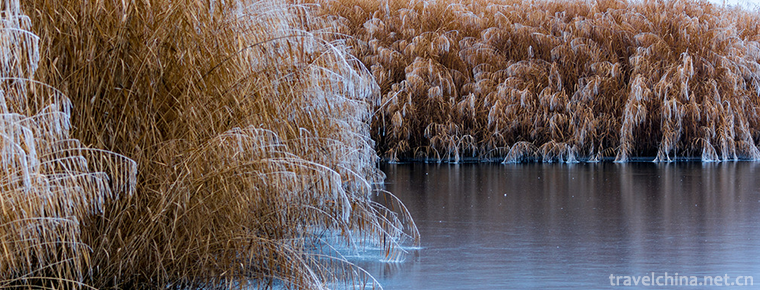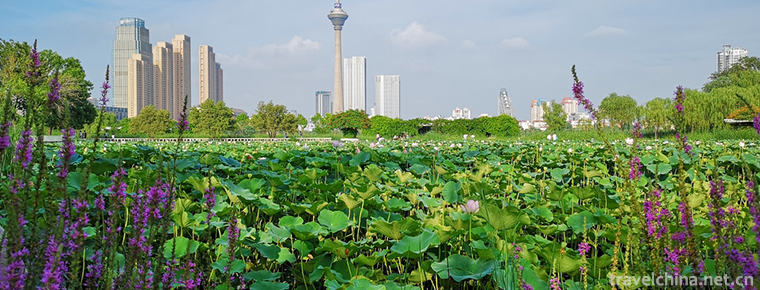Chengdu University of Technology
Chengdu University of Technology
website:http://www.cdut.edu.cn
VR:https://720yun.com/t/69722wOdata?pano_id=223340
MAP:http://map.cdut.edu.cn/index.jsp
Chengdu University of Technology was founded on March 15, 1956 and approved by the State Council. On March 27, the Ministry of Higher Education and the Ministry of Geology jointly issued a paper based on the engineering departments of the Geology Departments of Chongqing University, Northwest University and Nanjing University. At the same time, some cadres and teachers from Beijing Institute of Geology and Northeast Institute of Geology were selected to form Chengdu. The College of Geological Exploration began to recruit undergraduates in the year it was founded. After the establishment of the school, the petroleum department, the second department and the third Department of the former Beijing Institute of Geology moved in successively. Chengdu Institute of Geological Exploration was renamed Chengdu Institute of Geology in 1958. In 1960, the school began to recruit graduate students. In 1981, the school became the first university to obtain the right to grant master's degree after the national resumption of the degree system, and in 1984 it received the right to grant doctoral degree. Chengdu Institute of Geology was renamed Chengdu Institute of Technology in 1993, and Chengdu University of Technology was established with the approval of the Ministry of Education in 2001. The school was directly under the Ministry of Geology, the Ministry of Geology and Mineral Resources and the Ministry of Land and Resources. In 2000, it was transferred to the local government and became a provincial key university jointly built by the central and local governments and mainly managed by the Sichuan Provincial People's Government. On November 3, 2010, the Ministry of Land and Resources and the Sichuan Provincial People's Government signed an agreement to build a Capital University of science and technology. In September 2017, the school entered the ranks of first-class national discipline construction universities.
After more than 60 years of construction and development, the school has become a multi-disciplinary university with the advantages of science and technology, geology, energy, resources science, nuclear technology and environmental science, and the specialties of chemical engineering, materials, electronics, machinery, information science and management science. It has three-level degree awards, bachelor's degree, master's degree and doctor's degree. Qualification of professors and doctoral supervisors. In the long-term school-running practice, the school has formed the enterprising spirit of "unwilling to be the first, daring to be the first", "pursuing reason and achieving work" and the fine tradition of "struggling hard and striving hard".
The school is located in the urban area of Chengdu, with an advantageous geographical location. It has a land area of 2887 Mu and a building area of 970,000 square meters. There are 36 353 full-time students, including 30 540 undergraduates and 5 194 full-time postgraduates. There are 17 teaching institutes, 1 Institute of Sedimentary Geology and 1 Institute of Geological Survey. There is also an independent college (Engineering and Technology College of Chengdu University of Technology).
The school has 68 undergraduate enrollment majors (categories), including 8 national characteristic majors, 4 national comprehensive reform projects, 12 provincial characteristic majors, 13 provincial comprehensive reform pilot projects, and 2 provincial application-oriented demonstration majors. The school is the "Education and Training Plan for Excellent Engineers" of the Ministry of Education, of which 12 are provincial characteristic majors. There are 7 pilot majors (including independent enrollment orientation) in the National Excellent Engineer Education and Training Plan, 19 pilot majors in the Provincial Excellent Engineer Education and Training Plan, 1 pilot major in the Provincial Excellent Agriculture and Forestry Talents Education and Training Plan, 1 pilot major in the Provincial Excellent Legal Talents Education and Training Plan, and 1 pilot major in the Provincial Excellent Legal Talents Education and Training Plan.“ One pilot specialty of "Education and Training Plan for Excellent Journalists and Communications Talents".
The school has seven doctoral degree authorization points for first-level disciplines and 20 master's degree authorization points for first-level disciplines. The disciplines cover 10 disciplines such as science, engineering, arts, management, economics, law, philosophy, agriculture, teaching and art. There are one first-level national key disciplines (geological resources and geological engineering), three second-level national key disciplines (geological engineering, mineral prospecting and exploration, earth exploration and information technology), one national key disciplines (fostering), and 14 provincial key disciplines (applied chemistry). Environmental Engineering, Solid Geophysics, Geotechnical Engineering, Paleontology and Stratigraphy (Paleoanthropology), Signal and Information Processing, Structural Geology, Geochemistry, Oil and Gas Field Development Engineering, Quaternary Geology, Material Science, Nuclear Technology and Applications, Management Science and Engineering, Mineralogy, Petrology and Mineralogy), 1 Provincial Key Disciplines (Cultivation) Applied Mathematics. One discipline (geosciences) has entered the top 1% ranking of ESI in the world, and the group of Geosciences has entered the national "two-class" construction discipline ranking.
The school has 3396 staff, of which 271 are professors and 584 are associate professors. Flexible intellectual high-end experts (academicians) 34. As of December 2018, it has won the title of "National Outstanding Technical Talents", "National Outstanding Contributions to Young and Middle-aged Experts", "National Outstanding Youth Science Foundation", "China Youth Science and Technology Award", "China Youth Science and Technology Award", "Education Minister Jiang Scholars Award Program" and "National High-level Talents Special Plan for Ten Thousands of People". There are 2 leaders of the special support plan, 8 National candidates for the project of millions of talents, 3 members of the subject appraisal team of the State Council, 1 training target for the Talent Training Project of Sichuan Tajian, 13 experts of the "Thousand-Person Plan" of Sichuan, 99 experts of the "Special Allowance of the Government of the State Council", and 99 outstanding contributions of Sichuan Province. There are 35 excellent experts, 73 academic and technological leaders in Sichuan Province, 134 candidate candidates for academic and technological leaders in Sichuan Province, 2 excellent teachers in China, 1 famous national teaching teacher, 7 famous teachers in Sichuan Province, 3 excellent teachers in Sichuan Province, 1 excellent educator in Sichuan Province and 1 teacher in Sichuan Province. One German pacesetter, including a national teaching team, an innovative group of the National Natural Science Foundation, a team of the Yangtze River Scholars and Innovation Team Development Plan of the Ministry of Education, eight Sichuan Science and Technology Innovation Teams, 16 Sichuan Education Department Science and Technology Innovation Teams and 6 Sichuan Teaching Teams, won 5 National Teaching Achievement Awards. The school has been awarded the honorary title of "Advanced Collective Employment Work for College Graduates in Sichuan Province", and has been selected as the top 50 universities with typical employment experience for graduates in 2011-2012. In 2016, the school was approved to Sichuan Innovation and Entrepreneurship Demonstration Club and Sichuan Province Deepening Innovation and Entrepreneurship Education Reform Demonstration University. In 2017, the school was awarded as a national model university for deepening innovation and entrepreneurship education reform. In 2018, the school was selected as the top 50 universities with typical experience of innovation and entrepreneurship in 2018.
The school has three national experimental teaching demonstration centers, one national virtual simulation experimental teaching center, three provincial virtual simulation experimental teaching centers, three provincial virtual simulation experimental projects, seven provincial experimental teaching demonstration centers, one provincial engineering laboratory, three national engineering practice education centers, and two provincial personnel training centers. The experimental area of innovation of maintenance mode, 8 provincial undergraduate talent training bases, 2 National Undergraduate Practical Education Bases and 4 provincial undergraduate practical education bases are the implementation schools of National Undergraduate Innovation and entrepreneurship plan. There are 2 national quality courses, 2 national quality resources sharing courses, 1 national quality video open course, 34 provincial quality courses, 15 provincial quality open courses, 17 provincial quality resources sharing courses, 11 provincial quality online open courses and 5 provincial innovation and entrepreneurship education demonstration courses.
The school is an important high-level personnel training and scientific research base of the country. There are two state key laboratories (State Key Laboratory of Geological Disaster Prevention and Geological Environmental Protection, State Key Laboratory of Oil and Gas Reservoir Geology and Development Engineering), one joint key laboratory built by Ministry of Education and Sichuan Province, and two ministries of natural resources. Key Laboratory, 1 State Key Laboratory of Environmental Protection, 5 Field Scientific Observation and Research Bases of Ministry of Land and Resources, 2 Sichuan Key Laboratories, 1 Sichuan Key Research Base of Philosophy and Social Sciences (Expansion), 1 Sichuan Popularization Base of Social Sciences, 1 Sichuan Key Laboratory of Universities, and 1 Sichuan Environmental Protection Department Key laboratories, four post-doctoral research mobile stations and one post-doctoral innovation practice base in Sichuan Province, and three "Sichuan 2011 Collaborative Innovation Center" led by our university.
The school has undertaken a large number of important projects, such as the National Major R&D Plan, the National Major Science and Technology Special Project, the National Science and Technology Support Plan, the National Natural Science Foundation, the National 863 Plan, the National 973 Plan, the National Social Science Foundation and the National Geological Survey Plan. By 2018, the school has won 913 national and provincial science and technology awards, including the first prize of national science and technology progress, the first prize of national science and technology progress, the second prize of China's international science and technology cooperation, the second prize of national natural science, the prize of Chinese patent, the third prize of national technology invention, the first prize of Sichuan science and technology progress and the second prize of Sichuan province. Sichuan Province Philosophy and Social Science Excellent Achievements First Prize and other awards; more than 1400 authorized patents. The school takes serving the development and construction of the country, industries and local areas as its responsibility, and actively participates in the construction of power transmission from west to east, gas transmission from west to east, water transfer from south to north, Qinghai-Tibet Railway, oil and gas geological exploration, energy development, large-scale hydropower, regional and urban environment and large-scale transportation infrastructure projects.
The school is the National College Students'cultural quality education base, and organizes students to actively participate in scientific and technological cultural activities. The university students' social practice activities were awarded 13 times by the Central Propaganda Department and the Central Committee of the Communist Party of China. In the "Challenge Cup" National College Students Extracurricular Science and technology works competition, they won 5 national awards, two won the first prize in the province, 22 in the "entrepreneurial youth" business plan competition, 1 silver prize in the province, 13 in the national "Internet +" University. In the student innovation and entrepreneurship contest, it won 2 National bronze awards and 4 provincial gold medals. Four consecutive years, it won the Sichuan provincial "Internet +" College Students' innovation and entrepreneurship contest, the best organization award, 119 national awards and 157 provincial-level awards, and all kinds of University Arts at national, provincial and municipal levels. 559 awards were awarded in professional competitions.
The school has a natural museum with high popularity in the West and even in the whole country, which is mainly composed of Geoscience collections. There are 2.4 million printed books and periodicals in two libraries, 102 digital resource databases, 4.3 million electronic books and 49,000 electronic journals. A multi-disciplinary literature resources guarantee system featuring geoscience, energy, environment and other disciplines has been formed. The management standard of school archives has reached the national level standard of archives management of scientific and technological institutions. There are six academic journals sponsored by the school, including two CSCD core journals and two Chinese core journals.
The school attaches great importance to foreign exchange and cooperation. It has established a long-term cooperative relationship with large enterprises and research institutes in the fields of resources, energy, environment, construction, military industry and high-tech. It has established exchanges and cooperation with more than 60 universities and scientific research institutions in the United Kingdom, Canada, Russia, the United States, Australia, New Zealand, the Netherlands, Italy and other countries. Four Sino-foreign cooperative projects are being held with Staffordshire University and Brooks University in Oxford. Over 2700 foreign experts and students from more than 40 countries and regions were invited to give lectures and study abroad. Over 650 visits were made and more than 300 scientific research cooperation were carried out. The school has also hosted many international academic conferences.
So far, the school has delivered more than 190,000 graduates to the society. Among them emerged a group of well-known scholars and experts at home and abroad, including three academicians of two academies (Academician Liu Baojun, Academician Duoji, Academician Wang Chengshan), 15 winners of the National Outstanding Youth Science Fund, two winners of the Yangtze River Scholars Award Scheme, the National Special Award for Scientific and Technological Progress and the National May Day. There are many winners of the Labor Medal. A large number of graduates have made important contributions to China's economic construction and social development in the central and local governments, departments, land and resources, survey, geology, oil (energy) and other industries, and their outstanding achievements have been generally recognized by the society.
At present, the school fully carries out the spirit of the Nineteenth National Congress of the Party, guided by Xi Jinping's socialist thought with Chinese characteristics in the new era, under the leadership of the Sichuan Provincial Party Committee and the provincial government, and on the platform of the joint promotion of the "two-class" construction by the ministries, provinces, cities and schools, seizes opportunities, overcomes difficulties, and with heroic enthusiasm and high-spirited struggle. Struggle to build a high-level university with outstanding advantages and characteristics!
March 2019












-
Taining Scenic Tourist Area
Taining Scenic Spot: World Geopark, National AAAAA Class Tourist Spot, National Key Scenic Spot, National Forest Park, National Geopark, National Key Cultural Relics Protection Unit.
Views: 182 Time 2018-12-08 -
Bosten Lake Scenic Area
Bosten Lake Scenic Spot is a national 5A scenic spot, covering an area of 988 square kilometers, is located in Xinjiang, China's scenic spots, Bosten Lake was known as the West Sea in ancient times,.
Views: 219 Time 2018-12-12 -
Mount Danxia Scenic Area
Danxia Mountain Scenic Area is located in Renhua County, northeast of Shaoguan, Guangdong Province. Danxia Mountain is composed of red sandy scintillate rocks and characterized by red cliffs. Geologis.
Views: 149 Time 2018-12-12 -
Beihai Ocean Window
The Beihai Ocean Window is situated on the shore of the rich and beautiful Beihai Bay in China. It covers an area of 2.1 hectares and covers an area of 18,100 square meters. It consists of mysterious .
Views: 141 Time 2018-12-26 -
Chongli Wanlong Skiing Ground
Wanlong ski resort is located in Honghua Liang, Chongli District, Zhangjiakou City, Hebei Province. It covers an area of more than 30 square kilometers, with the highest elevation of 2110.3 meters and.
Views: 203 Time 2019-01-06 -
kangbaiwan manor
Kang Million Manor, also known as Heluo Kangjia, is located in Kangdian Town, Gongyi City, Henan Province (formerly Gongxian County). It was built in the late Ming and early Qing Dynasties.
Views: 193 Time 2019-01-29 -
Limutai Natural Scenic Area
Limutai Natural Scenic Spot is located at the northernmost end of Tianjin, known as "Tianjin Arctic". In the scenic area, the peak forest and canyon are strong and dangerous.
Views: 172 Time 2019-01-29 -
Tianta Lake Scenic Area
Tianta Lake Scenic Spot is located in the south of Tianjin City, close to the water park scenic spot, is the main attraction of Tianjin Radio and Television Tower. Tianta is the Tianjin Radio and Tele.
Views: 207 Time 2019-02-21 -
Qinghai Pingxian
Qinghai Pingxian, also known as Xining Fu Zi, is one of the new local folk songs in Qinghai Province. It is popular in Xining, Huangzhong, Datong and Mutual Aid Agricultural Areas. Qupai is known .
Views: 204 Time 2019-06-10 -
Cross stitch
Flower picking, a kind of drawing work, also refers to a needle method of embroidery, Chinese folk traditional handicraft. Also known as "pick weave", "cross embroidery", "cro.
Views: 230 Time 2019-06-21 -
Zhang Jia Agui
Ah Kui (September 7, 1717 - October 10, 1797). Zhang Jiashi , word Guang Ting , Number Cloud cliffs Manchuria's blue flag people (after the war in Xinjiang were promoted to Zheng Bai Qi), a Bachelor o.
Views: 192 Time 2019-09-11 -
Neijiang cultural undertakings
By the end of 2019, there are 121 performing arts venues in Neijiang City, including 6 cultural venues. There are 5 museums, 5 cultural relics protection and management institutions, 7 national key cultural relics protection units, 42 provincial cultural relics.
Views: 282 Time 2020-12-16











